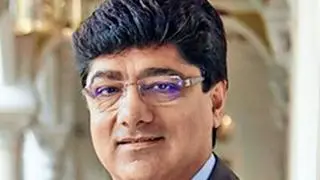Tulsi Tanti, Chairman and Managing Director of Suzlon Energy, says his company is preparing for the Centre’s revised target of installing 10,000 MW-a-year of wind power, to be achieved by 2019. Suzlon has been in financial difficulties in the recent past, but Tanti, in an interview to BusinessLine , said the company is getting over a difficult period and Suzlon will aggressively defend its market share. Excerpts from the interview:
The Centre wants the wind industry to install 10,000 MW a year by 2019. What is your take on that?
It is no doubt an ambitious target but I think it is doable. Not immediately, but perhaps by 2018 or 2019. Technically there is no constraint. China is doing 15,000 MW a year, why can’t India do 10,000 MW? The industry is very happy to take up the challenge.
What challenges would you need to overcome?
I see mainly three challenges. First, we have to work on grid management and align consumption with generation. Second is land acquisition. Land with good wind resources should be earmarked for wind sites. Also, the procedures for land acquisition take a long time. There should be better alignment on this between the Centre and the State governments...
This is an old problem…
Yes, but now with one State after another coming to the BJP... I see the probability of rising alignment between Central and State governments. The third challenge is finance. The Government should find some way of reducing interest costs, like the TUF scheme for the textile industry. It can come from the National Clean Energy Fund, or there could be a carbon tax on coal-based power production which can be used to reduce interest subsidy for clean energy industries. If they give a 5 per cent interest reduction then wind power tariff could be brought down by ₹1.
Are you suggesting this for IPPs or the turbine manufacturers?
For IPPs. For manufacturers, banks should give ‘project specific working capital.’ The working capital sanctioned is for the project (as opposed to the company), and repayment will be from the project cash flow. As and when my customer pays, I will repay. If there is any delay or uncertainty in the project, it will not be a pressure for the manufacturer.
Suzlon got such funding recently
Yes. We got ₹500 crore for a project in Rajasthan, project-specific working capital for the first time in the country. We have repaid and now the banks are lending us ₹1,500 crore (in that mode).
You see, there are lots of uncertainties (in the execution of a project) that are not in our control. Any delay due to the external environment, such as the substation not being ready, local issues, delay in disbursement of funds by banks to our customers — our margins are gone. India is a very difficult market, with high uncertainty, very competitive price, high interest cost and very low margin.
What is Suzlon’s response to the revised targets?
Our response is that we are expanding our rotor blade production capacity. We are putting up new plants in Rajasthan, Madhya Pradesh and Andhra Pradesh because it makes no sense for me to produce blades in our existing facilities and take them over long distances. We are investing ₹100 crore to set up these three plants. We are coming out with our next generation 2 MW machine — the S 111 — with 111-metre rotor diameter.
Do you see technology improvements opening up new geographies for wind?
Yes. Our 120-metre tower will increase the area available in the country for wind by 30 per cent. Sites that were not viable will now become viable. For example, we have identified a site in Rajasthan for the 120-metre tower. Earlier, that site was giving an IRR of 14 per cent. Now, with the 120-metre tower, it is giving 15-16 per cent IRR. The site would not have been viable with the previous products. If you take Tamil Nadu, with the 120-metre machine about 70 per cent of the area of the State will open up for wind.








Comments
Comments have to be in English, and in full sentences. They cannot be abusive or personal. Please abide by our community guidelines for posting your comments.
We have migrated to a new commenting platform. If you are already a registered user of TheHindu Businessline and logged in, you may continue to engage with our articles. If you do not have an account please register and login to post comments. Users can access their older comments by logging into their accounts on Vuukle.